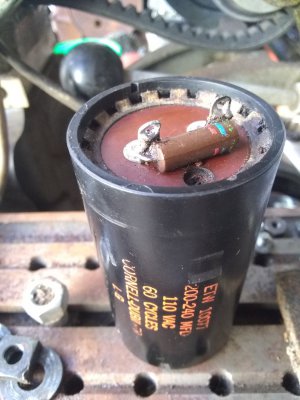- Joined
- Oct 15, 2013
- Messages
- 298
I have an Atlas motor that I'd like to bring back to life. It is 1/3 HP, ball bearing, 110 V, 1725 rpm. Unknown how long since it has been used. It looks ok on outside, not rusty.. When I power it up it turns at about 60 rpm, runs in both directions the same. I've typically not messed with motors with issues, just replaced them. But as this is an Atlas original to the machine it's on I'd like to keep this one around.
Is there anything that can be done for this motor? Dis-assemble, clean, lube, etc? New bearings? Any hope for it?
Thanks!
Is there anything that can be done for this motor? Dis-assemble, clean, lube, etc? New bearings? Any hope for it?
Thanks!


